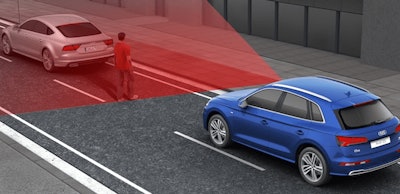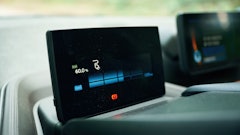
Washington, D.C. — A $1 trillion infrastructure bill currently before the U.S. House of Representatives has the potential to mandate automatic emergency braking in all passenger vehicles, setting a significant new benchmark for automakers.
The bill requires the Secretary of Transportation to make a rule establishing minimum performance standards for such anti-crash technology, and to require all passenger cars and large trucks to be sold with systems that alert the driver if a crash is imminent, and automatically apply the brakes if the driver fails to do so.
Passenger cars would also have to be equipped with lane-monitoring and lane-keeping systems, and be able to correct the course of the vehicle’s travel if the driver fails to do so.
A mandate for automatic braking has been a goal for the Insurance Institute for Highway Safety (IIHS) and the Highway Loss Data Institute (HLDI) for some time now, and according to the Insurance Institute for Highway Safety, police-reported crash data shows that crash avoidance technology could cut front-to-rear crashes in half.
“This bill pushes U.S. road safety policy forward in a number of areas, and we can see the work of IIHS-HLDI clearly reflected in many of the provisions,” said IIHS-HLDI president David Harkey in a statement.
“In some cases, the legislation is catching up with industry changes that we have already set in motion; in others, the bill could tee up meaningful progress on issues that we have been sounding the alarm on for years.”
As of December, 10 automakers have fulfilled a voluntary commitment to equip nearly all the new light vehicles they produce for the U.S. market with automatic emergency braking (AEB), ahead of the 2022-23 target set in the agreement brokered by IIHS and the National Highway Transportation Safety Administration in 2015.




















